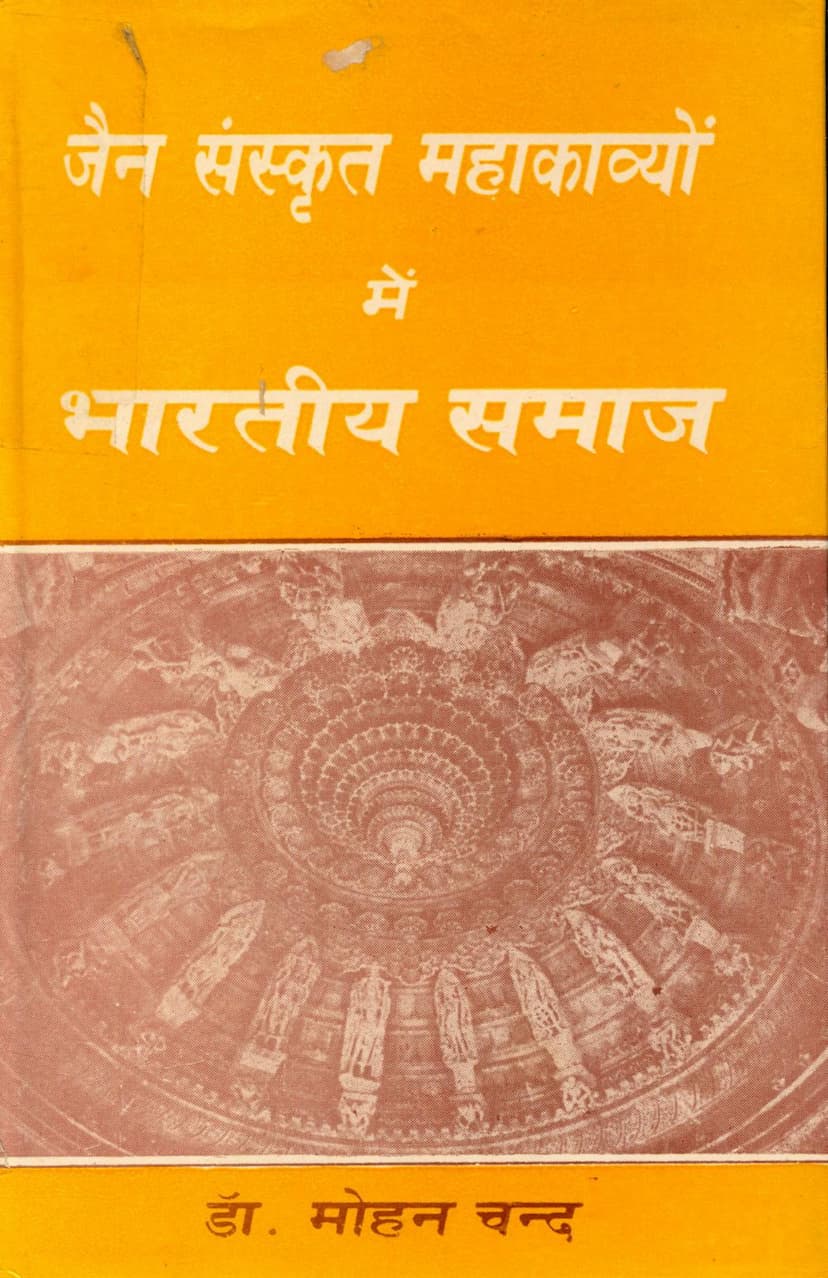Jain Sanskrit Mahakavyo Me Bharatiya Samaj
Added to library: September 2, 2025

Summary
Here's a comprehensive summary in English of the Jain Sanskrit Mahakavyo Mein Bharatiya Samaj by Mohan Chand, based on the provided text:
Book Title: Jain Sanskrit Mahakavyo Mein Bharatiya Samaj (Indian Society in Jain Sanskrit Mahakavyas) Author: Dr. Mohan Chand Publisher: Eastern Book Linkers
Overview:
This book, a PhD dissertation from Delhi University, undertakes a sociological and historical analysis of medieval Indian society (8th to 14th centuries CE) by examining the content of Jain Sanskrit Mahakavyas (epic poems). It highlights the significant contribution of Jain literature, often inspired by popular consciousness rather than royal patronage, to understanding the nuances of social history. The author aims to shed new light on various aspects of medieval India, correcting existing misconceptions.
Key Themes and Structure:
The book is divided into nine chapters, each focusing on a specific facet of Indian society as depicted in Jain Sanskrit Mahakavyas:
- Literature, Society, and Jain Sanskrit Mahakavyas: This introductory chapter lays the theoretical groundwork for analyzing literature as a source for social history. It discusses the evolving nature of historical writing, the relationship between literature and society, and introduces the concept of sociology and its methodologies. It also provides an overview and classification of Jain Sanskrit Mahakavyas, introducing the specific texts studied in the book.
- Political Governance and State System: This chapter delves into the political structures of medieval India, including the nature of governance, the role of the king, succession, ministerial systems, treasury management, justice administration, central and provincial administration, and village organization. It examines various political theories and practices mentioned in the Mahakavyas, such as the 'Saptanga' (seven limbs of the state) and 'Shadgunya' (six political measures).
- War and Military System: This chapter analyzes the military aspects of medieval India as portrayed in the Mahakavyas, including the political background of wars, causes of conflict, diplomatic missions, military administration, types of armies, warfare strategies, various types of weapons, military camps, and the aftermath of battles.
- Economy and Industry/Trade: This section explores the economic activities of the period, covering land ownership, agricultural practices, animal husbandry, industries, trade routes, urban markets, commercial guilds, currency, and business ethics. It discusses the economic structure based on the caste system and the importance of various professions.
- Residential Systems, Food, and Clothing: This chapter examines the living conditions of the time, detailing different types of settlements (villages, towns, cities, and specific types like 'Nigama'), their architectural features, dietary habits, food and beverages, and the prevalent fashion and attire for men and women, including jewelry.
- Religious Public Life and Philosophical Beliefs: This chapter focuses on the religious landscape, detailing Jain religious life, rituals, worship practices, temples, pilgrimage sites, Jain deities, monastic life, asceticism, and the philosophical tenets of Jainism. It also briefly touches upon the religious practices of contemporary Brahmanical traditions.
- Education, Arts, and Science: This section explores the state of education, including educational institutions, curriculum, teaching methods, and the role of teachers and students. It also covers the development and practice of various arts like music, dance, and painting, as well as knowledge of sciences like Ayurveda, astronomy, and physiognomy (Shakuna Shastra).
- Status of Women and the Institution of Marriage: This chapter provides a detailed account of the position of women in medieval society, their rights, roles in different spheres (political, religious, economic, family), and the prevalent customs and practices related to marriage, including different forms of marriage and associated rituals.
- Geographical Situation: The final chapter maps out the geographical context, discussing mountains, rivers, and important regions and cities mentioned in the Mahakavyas, providing insights into the geographical knowledge of the time.
Contribution and Significance:
The book emphasizes that Jain Sanskrit Mahakavyas offer invaluable material for reconstructing the social and economic history of India. They not only illuminate the various facets of medieval life but also help in dispelling myths propagated by earlier historical accounts. The author's re-examination of concepts like 'Nigama' (a term often debated by historians) and the provision of new historical evidence are highlighted as significant contributions. The book is considered a valuable resource for scholars and researchers specializing in medieval Indian history and Sanskrit literature.
Methodology:
The dissertation employs a modern sociological approach, analyzing literary sources to understand social history. It draws upon both Indian and Western sociological theories, providing a theoretical framework for the study. The author meticulously details the content of various Jain Sanskrit Mahakavyas, categorizing and analyzing the information within the historical context of the 8th to 14th centuries CE.
Overall:
"Jain Sanskrit Mahakavyo Mein Bharatiya Samaj" is a significant academic work that utilizes Jain epic poetry as a primary source to reconstruct a comprehensive picture of medieval Indian society. It underscores the importance of lesser-utilized literary traditions in providing a richer and more accurate understanding of India's past.